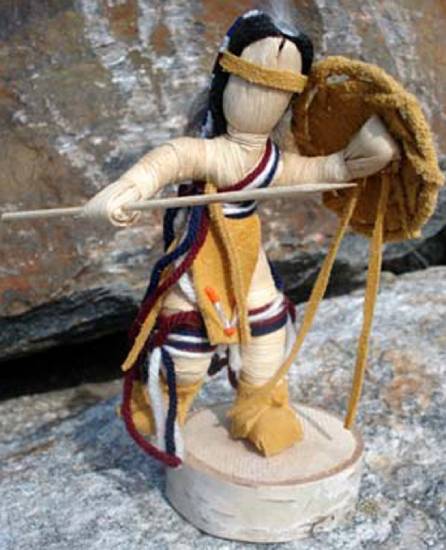The Role of Indigenous Crafts in Preserving Cultural Identity
When a grandmother teaches her granddaughter to bead a traditional design, something deeper happens than simple skill transfer. The patterns carry stories. The colours hold meaning. The very act of creating connects the child to ancestors she’ll never meet.
This connection is what makes Canadian Indigenous art and crafts so much more than decorative objects. They’re living links to cultural identity that mainstream society often misses. But here’s what might shock you: these connections are breaking down faster than most people realize.
The statistics are troubling. Less than 30% of Indigenous youth can identify traditional symbols from their own cultures. Even fewer can create traditional crafts using ancestral techniques. Each passing year sees more knowledge slip away.
The Fear of Cultural Extinction
Picture this scenario: your family’s stories, traditions, and entire way of understanding the world could disappear within your lifetime. That’s the reality facing many Indigenous communities across Canada.
Traditional crafts aren’t just hobbies or economic activities. They’re memory banks. When an elder passes away without teaching their beadwork techniques, entire design vocabularies vanish. When young people move to cities and abandon traditional pottery methods, spiritual connections to clay and earth get severed.
The fear runs deeper than losing pretty objects. It’s about losing identity itself. Who are you when the physical expressions of your culture fade away? How do you pass on values, stories, and spiritual beliefs without the crafts that have carried them for generations?
Why Crafts Matter More Than You Think
Most people see a pair of moccasins and think “nice shoes.” Indigenous creators see something entirely different. The choice of leather speaks to relationships with animals. The beadwork patterns reference clan histories. The construction method follows teachings passed down through countless generations.
Take quillwork, for example. The process of preparing porcupine quills requires specific knowledge about seasons, animal behaviour, and processing techniques. But it also requires spiritual preparation. Many traditions include prayers, ceremonies, and mindful practices that connect the creator to their ancestors and the natural world.
These aren’t just craft techniques. They’re complete worldviews expressed through material culture. When you lose the craft, you lose the worldview.
The ripple effects are profound. Communities that maintain strong craft traditions tend to have higher levels of cultural pride. Youth who learn traditional arts show better outcomes in education and mental health. There’s something about working with your hands in ancestral ways that strengthens cultural identity.
The Modern Threat
Here’s what makes the current situation so urgent: globalization moves faster than cultural preservation. Young Indigenous people face pressure to assimilate into mainstream society. Traditional crafts seem irrelevant compared to smartphones and social media.
But here’s the paradox. The same young people struggling with identity issues often find healing through traditional arts. Learning to create with their hands reconnects them to cultural roots they didn’t know they were missing.
The problem is access. Many communities lack elders who still know traditional techniques. Others have elders with the knowledge but no resources to teach. Materials become harder to source. Time gets consumed by modern life demands.
Canadian Indigenous art and crafts face a critical window. The last generation of master artisans is aging out. Their knowledge represents thousands of years of cultural refinement. Once lost, it can’t be recovered.
The Collector’s Responsibility
When you buy mass-produced “Indigenous-inspired” items from big box stores, you’re contributing to cultural erosion. These cheap imitations flood the market and devalue authentic work. They spread misconceptions about what Indigenous art actually looks like.
Real Indigenous crafts tell different stories. Each piece carries the maker’s cultural knowledge, spiritual connection, and artistic vision. The price reflects not just materials and time, but generations of inherited wisdom.
Smart collectors understand this difference. They seek out authentic pieces directly from Indigenous artists. They pay fair prices that support cultural preservation. They learn about the cultural contexts behind the work.
This isn’t just about having nice things. It’s about voting with your wallet for cultural survival. When you support authentic Indigenous crafts, you’re funding the continuation of ancient traditions.
The Economic Reality
Money matters in cultural preservation. When traditional crafts can’t support families, young people choose other careers. The economic devaluation of Indigenous arts threatens their survival.
This creates a vicious cycle. Fewer practitioners mean less knowledge transfer. Reduced knowledge transfer leads to lower quality work. Lower quality work commands lower prices. Lower prices discourage new practitioners.
Breaking this cycle requires market education. Buyers need to understand what they’re purchasing. Authentic Indigenous crafts aren’t just products—they’re cultural investments. The prices reflect the true value of preserved knowledge.
Communities that successfully market their traditional crafts create sustainable cultural preservation. Artists can focus on their work instead of survival. Young people see viable career paths. Cultural knowledge gets valued financially.
What’s at Stake
The loss of traditional crafts isn’t just about Indigenous communities. It’s about human cultural diversity. When ancient art forms disappear, the world becomes less rich, less complex, less interesting.
These craft traditions offer different ways of understanding materials, beauty, and meaning. They provide alternative approaches to creating and thinking. They represent thousands of years of human creativity and cultural refinement.
The stakes are higher than most people realize. We’re not just talking about preserving museum pieces. We’re talking about keeping alive different ways of being human.
Indigenous crafts preserve knowledge about sustainable material use, spiritual connections to nature, and community-based creation. These aren’t historical curiosities—they’re wisdom we need for the future.
The choice is clear. Support authentic Indigenous crafts or watch irreplaceable cultural knowledge disappear forever. The window for action is closing. What will you choose?
Featured Image Source: https://wolfden.ca/wp-content/uploads/dollspear.jpg



